- Details
- Hits: 1860
|
THE EIGHTH AERIAL DERBY |

Bank Holiday Monday 6th August 1923. Start and Finish: Waddon (Croydon)
Weather: Fine.
2 laps of 99.5 miles miles. Start: 1:45pm
Turning Points: Brooklands, Hertford, West Thurrock. Epping was cut out this time.
Story of the Race:
"Fine weather and good racing."
| Pilot | Aircraft | Race No |
Result - Speed/Handicap |
||
 |
Dr Edward D Whitehead Reid * | SE.5a | G-EBCA | 1 | 9th/9th |
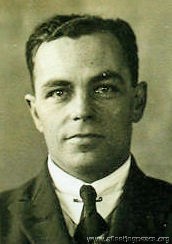 |
Mr Bert Hinkler | Avro 534 Baby | G-EAUM | 2 | Retired on Lap 2 - forced landing at Hounslow |
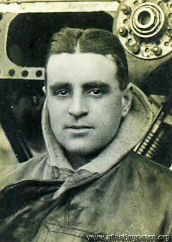 |
Mr J R King | Sopwith Gnu | G-EADB | 3 | 8th/7th |
 |
Flt-Lt J W Woodhouse | Boulton & Paul P.9 | G-EBEQ | 4 | 7th/3rd |
 |
Capt H A Hamersley | Avro 553 | G-EAPR | 6 | 6th/1st |
 |
Mr Frederick P Raynham | Martinsyde F.6 | G-EBDK | 7 | 5th/4th |
 |
Maj H Hemming | DH.37 | G-EBDO | 8 | Retired on Lap 2 - forced landing at Romford |
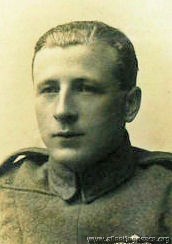 |
Mr H H Perry | DH.9A | G-EBCG | 9 | 4th/2nd |
.jpg) |
Mr Frank T Courtney | DH.9A | G-EBGX | 10 | Retired on Lap 1 - forced landing at Brooklands |
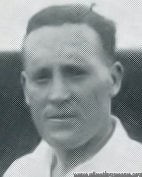 |
Capt C D Barnard | DH.9 | G-EBEZ | 11 | 3rd/6th |
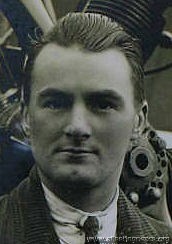 |
Flt-Lt W H Longton | Sopwith Schneider Cup 'Rainbow' | G-EAKI | 12 | 2nd/8th |
 |
Mr Larry L Carter | Gloster Mars I | G-EAXZ | 13 | 1st/5th |
* racing as 'A T Renno'
Starters: 12 (of 13 entrants) Finishers: 9
Did not start:
| Pilot | Aircraft | Race No | |||
| Mr W MW Thomas | Avro 504K | G-EAMZ | 5 | had hurt his knee the day before |
- Details
- Hits: 2241
The Aviators |
- Details
- Hits: 3480
|
Capt Charles Douglas Barnard
|
||
|
Personal pilot to the Duchess of Bedford, 'ribald and golden-haired'. b. 8 Dec 1895 in London; his father, Charles Gilbert Barnard, was a master printer (and not related to Franklyn Barnard's father). He learnt to fly in 1915 with the RFC. After WWI, became a test pilot for Sopwith, then a pilot with the de Havilland Airplane Hire Service after meeting Alan Cobham, then their chief pilot, in Spain. In July 1920, he was convicted of manslaughter, for killing an elderly man in a car accident in which he failed to stop, and didn't report; "Charles Barnard (24), a demobilised airman from Watford whose machine was brought down in flames in France, was charged with the manslaughter of Alfred Sharp on the night of May 2, by knocking him down whilst driving a motor-car. A button, answering the description of other buttons from the deceased's coat, was found between the bonnet and mudguard of the accused's car. He was remanded, bail being refused." It also turned out that his driving licence had lapsed at the time, and he hadn't renewed it until some days after the accident. He was given 4 months imprisonment in the 'Second Division' (such prisoners were kept apart from other classes of prisoners, received more frequent letters and visits and wore clothes of a different colour). The Judge said there was "too much reckless driving by people who served in the war. Their war services were no consolation to bereaved relatives." Settling down a bit after that, he was the pilot in 1923 when an aeroplane belonging to the de Havilland Hire Service was used to ferry Commander Bristow to have a look at an Italian ship, the D'Aosta, which had become stranded in Malta. It was the first time the flight had been made, and it took over 14 hours, mainly (Charles complained) because the authorities in Pisa insisted on a deposit of 15% of the value of the machine. One of his other jobs for the de Havilland Hire Company was to fly G-EBGT 'Nulli Secundus', a perfectly good D.H.9c, while a certain Captain Spencer jumped out of it - see the video here.
His first long-distance flight with the Duchess of Bedford was a tour in 1927 from her home in Woburn Abbey to France, Spain and North Africa, covering 4,500 miles in 3 weeks. Two years later, he piloted her Fokker monoplane, the 'Spider' to India and back, 10,000 miles in 88.5 hours; the RAeC gave him their Gold Medal for the year. It wasn't their first attempt at the flight to India and back - a year before they had tried the same thing, but problems with the propellor meant that the Duchess had had to come back by steamer from Karachi (which at the time was in India, of course). In 1928, described as a 'flying man', he was cited as the co-respondent in a divorce case. At the time, he and Mrs Melita Erna May were living together at his place in Monmouth Rd, Bayswater; they got married in December. |
- Details
- Hits: 1990
|
Mr Larry L Carter
|
||
|
One of the original AT&T pilots after WWI. In May 1922, "Mr. Larry Carter had an unusual experience while flying the 10-seater Bristol from Paris to London on Wednesday. Just as he rose from the ground at Le Bourget one of the joints of his under-carriage became loose, and a portion of the under-carriage was left hanging down. This was quite unnoticed by Mr. Carter, but the officials at Le Bourget saw what had happened and wirelessed to Croydon a full description of the occurrence. The wireless operators at Croydon, as soon as Mr. Carter came within speaking range, "rang him up" and told him what had happened. Mr. Carter, being thus warned of what difficulties were in store for him when the time came for him to land, was able so to manoeuvre his machine that, after a landing which excited the admiration of all the pilots on the aerodrome, only the tip of one wing was damaged. Had he not been made aware of the breakage in the under-carriage it is highly probable that a serious crash would have resulted." Gloster's test pilot from 1923; he flew the prototype of the Grebe (derived from the SE5) in that year's King's Cup race. Fractured his skull and broke a leg when the Gloster II racer crashed in 1925, and in 1928 (not having flown since) died from meningitus, aged 28. |
- Details
- Hits: 2959
|
Capt Frank Thomas Courtney
|
||
| An Irishman and early aviator; he test-flew the prototype D.H.18 - de Havilland's first purpose-designed airliner - in March 1920 and often flew it in service.
Also flew in the 1929 Cleveland National Air Races. Also flew the Cierva autogyro in 1925, (but not in the King's Cup) |
- Details
- Hits: 2584
| Capt Harold Alan Hamersley MC | ||
|
|
|
|
|
b 6 Feb 1896 in Guildford, W Australia. Studied mechanical engineering before WWI, commonwealth commission then transferred to the RFC in June 1916. Served with 60 Sqn in France, where he was awarded the MC for gallantry in leading patrols. Ended the war with 11 victories, despite his SE.5 being damaged and forced down by German ace Werner Voss in September 1917. Awarded a permanent RAF commission in 1926, then promoted to Wing Commander in 1938 as Chief Instructor to the London University Air Squadron. d. 1967 |
||
- Details
- Hits: 2264
| Maj Harold Hemming AFC | ||
|
photo: 1916, when a Lieut in the Worcestershire Regiment, aged 23 |
|
|
|
Director (with Alan Butler as Chairman) of the 'Aircraft Operating Company'. In 1925, they were air surveying in British Guiana. In 1923, he flew Alan Butler's DH37 'Sylvia' in the King's Cup, coming 5th (as had Alan himself, the year before), and then borrowed it again in 1925, coming 3rd. Unfortunately, while he was making a test flight in 1927 in the DH37 (now re-engined and called 'Lois') the aircraft hit a scoring board and crashed. The passenger was killed and Hemming lost an eye and sustained other injuries. |
||
- Details
- Hits: 2264
| Sqn Ldr Herbert John Louis Hinkler | ||
|
photo: 1927, aged 35 |
|
|
|
Australian 'Lone Eagle', aviation pioneer, killed in a crash in Italy in 1933 |
||
- Details
- Hits: 2286
| Mr John R King | ||
|
|
|
|
|
possibly John King, b 1886, from Birmingham; RAeC certificate 7436 'Pat' King, later an Air Vice Marshall |
||
- Details
- Hits: 2194
| Flt-Lt (later Sqn-Ldr) Walter Hunt Longton | ||
|
|
|
|
|
'Scruffie' Longton, from Lancashire. 11 victories in WWI flying SE5s; DFC and bar. Well known pre-war motor-cycling, and post-war aeroplane racer; whilst practising for the Bournemouth Air Meeting in April 1927, his aeroplane was hit by "one or two charges of shot from a sporting gun", possibly in protest at flying races on a Good Friday. A reward of £25 was offered for the detection of the culprit. He was killed soon after - June 1927 - in a mid-air collision at the Bournemouth Whitsun Meeting, flying the prototype Bluebird. "Every aircraft constructor knew that 'Longton's opinion' was worth having on anything new." C G Grey |
||
- Details
- Hits: 2377
| Capt Herbert Howard Perry | ||
|
|
|
|
|
b. Birmingham 3 Jul 1892 RFC in WWI; cross-channel pilot for Handley Page Transport 1920-22; test pilot for ADC Transport 1922-27. Joined Imperial Airways in 1927
Feb 1928: "A FLYING RECORD. Captain H. Perry, an Imperial Airways pilot, piloted a seven-ton Handley-Page Napier air liner, with a full load of passengers and freight, from London to Brussels on Saturday in 85 minutes flying time, a record for this type of machine." Address in 1932: 'Sinaia', Cosdach Ave, Wallington, Surrey A member of the Court of the Guild of Airline Pilots and Navigators in the 30s; awarded Master Pilot's Certificate in 1935 |
||
- Details
- Hits: 2410
| Mr Frederick Philips Raynham | ||
|
|
© The Royal Aero Club [0011-0050] |
|
|
© The Royal Aero Club [0357-0137] |
© The Royal Aero Club [0738-0152] |
|
|
© The Royal Aero Club [0906-0042] |
© The Royal Aero Club [0908-0175] |
|
|
'Fred', originally from Suffolk; the first man to recover from a spin, (although he didn't know how he had done it); test pilot for Hawkers; died 1954 in the USA and is buried in Colorado Springs. Survived a lot of crashes. |
||
- Details
- Hits: 2383
| Dr Edward Whitehead Reid | ||
|
|
|
|
|
b. 22 Jun 1883 in Canterbury Kent A GP (as was his father). "He had a fine athletic figure, and was a good all-round athlete". In WWI he served as surgeon in the Duchess of Westminster Hospital in France, and later in Egypt. Taught to fly by pilot friends, he bought his first plane (G-EAFH, an Avro 504) in 1922, then the same year acquired the first privately-owned SE5a (G-EAZT) before swapping it for another (G-EBCA) which he then raced in the 1923 Aerial Derby. This latter aircraft was somewhat underpowered at the time and apparently could only just reach 65mph. (He finished last, even on handicap). He bought his first SE5a for £30 from an enterprising mechanic who had been given 5 war-surplus ones to smash, but instead carefully took them apart, piled them up to look "like firewood", bought the lot for a fiver at auction and then carefully re-assembled them. He housed his aircraft in his own hangar on his own aerodrome, flew to "just about every air meeting of importance", and often took part in races. He was a friend of the novelist Joseph Conrad, and in 1927 recalled him saying after his first flight that flying was easy "compared to rounding Cape Horn in a sailing vessel in a storm". But then, apparently Conrad said that about everything, except writing a novel. Later, a Flight Lieutenant with 601 (County of London) Bomber Squadron and President of the Kent Gliding Club. d. 20 Oct 1930, aged 47, near Maidstone, Kent after he crashed during an attempted forced landing in his Westland Widgeon II G-EBJT 'Wendy'. He and his passenger, 21-year old Irene Burnside, were returning from a gliding exhibition and had run into bad weather. She was killed outright, he died a day later from his injuries. |
||
- Details
- Hits: 2051
| Sqn-Ldr (later Wing-Cdr) John Whitaker Woodhouse | ||
|
|
|
|
|
from Devon; pre-WWI, a well-known car and motor-cycle racer. A member of No. 4 Squadron in WWI, he was the first pilot to land a spy successfully behind the German lines, and was also lost over the North Sea for several hours after having attacked and driven off a Zeppelin. In 1931, he was in command of No. 207 (Bombing) Squadron at Bircham Newton. |
||



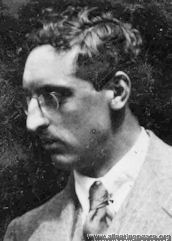
 photo: 1972, holding the King's Cup at the RAF Museum, Hendon, aged 78
photo: 1972, holding the King's Cup at the RAF Museum, Hendon, aged 78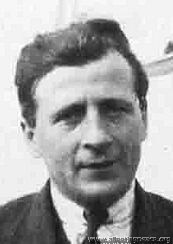 1922, aged 30
1922, aged 30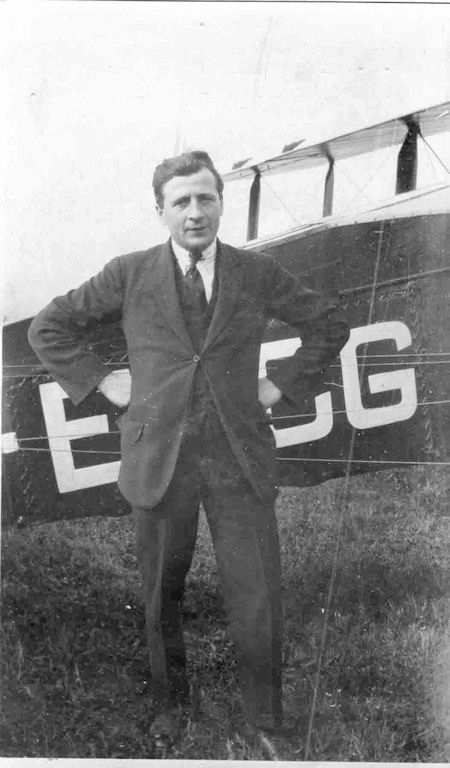 1922
1922 1920, aged 27
1920, aged 27![Fred Raynham [0011-0050]](/images/gallery/aviators/preview/333s333/Fred%20Raynham%20%5B0011-0050%5D.jpg)
![Fred Raynham [0357-0137]](/images/gallery/aviators/preview/333s333/Fred%20Raynham%20%5B0357-0137%5D.jpg)
![Fred Raynham [0738-0152]](/images/gallery/aviators/preview/333s333/Fred%20Raynham%20%5B0738-0152%5D.jpg)
![Fred Raynham [0906-0042]](/images/gallery/aviators/preview/333s333/Fred%20Raynham%20%5B0906-0042%5D.jpg)
![Fred Raynham [0908-0175]](/images/gallery/aviators/preview/333s333/Fred%20Raynham%20%5B0908-0175%5D.jpg)
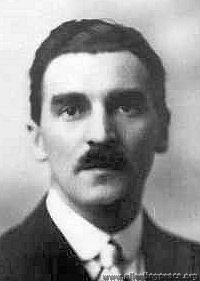
 1930, aged 42
1930, aged 42